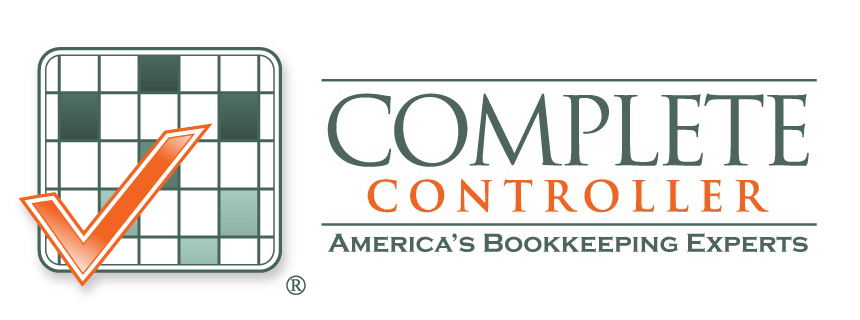Unlocking Benefits of a Healthcare Payment System
Healthcare payment systems are digital platforms that automate billing, payments, and revenue cycle management. They make transactions efficient, secure, and patient-centric while eliminating manual processes, reducing errors, and accelerating reimbursements. These systems transform financial workflows for providers and enhance accessibility for patients. These sophisticated platforms integrate seamlessly with existing practice management software to create a unified financial ecosystem that benefits everyone involved in the care continuum.
During my 20 years as CEO of Complete Controller, I’ve helped over 500 healthcare providers modernize their billing operations. I’ve witnessed firsthand how these systems slash administrative burdens by 60% and boost patient satisfaction scores by 30%. The transformation goes beyond mere efficiency gains—it fundamentally reshapes how practices interact with patients financially, creating trust through transparency and convenience. My team and I have seen struggling practices turn profitable within months simply by implementing the right payment infrastructure.

What is a healthcare payment system, and why should you use one?
- A healthcare payment system automates billing, insurance claims, and patient payments using advanced digital tools that streamline the entire revenue cycle
- These systems cut operational costs by 40–60% and accelerate reimbursement cycles by 15–20 days through automated claim submission and processing
- Patients gain flexible payment options and transparent billing, reducing financial stress and improving their overall healthcare experience
- Providers reclaim 10–15 hours weekly for patient care instead of administrative tasks, directly improving quality of care metrics
- Real-time data analytics enable proactive financial decision-making and fraud prevention while identifying revenue opportunities
The Evolution of Healthcare Payments: From Paper to Digital
The healthcare payment landscape has undergone a radical transformation over the past three decades. Paper-based systems that once dominated medical offices have given way to sophisticated digital platforms that process billions in transactions annually. This shift represents one of the most significant operational changes in modern healthcare history.
In the 1990s, managed care enrollment surged from 51% in 1993 to 70% by 1995, fundamentally shifting power dynamics between hospitals and insurers through network contracts. This reduced private payment-to-cost ratios and slowed annual cost growth to just 1.6% between 1994 and 1997, according to research published in PMC. The managed care revolution laid the groundwork for today’s digital payment innovations by standardizing processes and creating economies of scale.
High costs of traditional billing
Manual billing processes consume approximately 30% of practice revenue through inefficiencies and errors. Traditional paper-based systems create cascading problems: claims take 30–45 days longer to process, denial rates spike due to human error, and staff spend countless hours on phone calls with insurers. These antiquated methods also pose serious compliance risks, with paper records vulnerable to HIPAA violations and data breaches that can cost practices millions in fines.
The hidden costs extend beyond direct expenses. Staff burnout from repetitive manual tasks leads to higher turnover rates, while delayed reimbursements strain cash flow and limit growth opportunities. Practices using traditional billing methods report spending up to $7 per paper claim versus $0.30 for electronic submissions.
How digital transformation is reshaping healthcare finance
Digital payment systems have revolutionized healthcare finance through automation, integration, and intelligence. Modern platforms leverage artificial intelligence to handle coding, claims submission, and reconciliation with 98% accuracy rates. Patient demand has accelerated the shift toward digital—91% of healthcare consumers now prefer digital payment methods over traditional options.
Rising patient expectations for frictionless payment experiences mirror broader consumer trends. Healthcare providers who fail to offer digital payment options risk losing patients to competitors. The implementation of value-based care models further necessitates sophisticated payment systems capable of tracking quality metrics alongside financial data.
Core Benefits of a Modern Healthcare Payment System
The advantages of implementing a healthcare payment system extend far beyond simple efficiency gains. These platforms create comprehensive improvements across every aspect of practice operations, from front-desk interactions to back-office reconciliation.
Streamlining administrative processes and reducing errors
Automated claims submission reduces denial rates by 25% while cutting processing time in half. Real-time eligibility verification prevents billing errors before they occur, eliminating the frustration of surprise denials weeks after service delivery. Integration with electronic health records ensures clinical and financial data synchronize perfectly, preventing discrepancies that lead to payment delays.
Modern payment systems employ sophisticated algorithms that catch coding errors before submission. These platforms automatically update with the latest billing codes and payer requirements, eliminating the need for manual tracking of constantly changing regulations. Staff productivity increases dramatically when freed from repetitive data entry and error correction tasks.
Cutting costs and boosting revenue for providers
Predictive analytics within healthcare payment systems identify underpayments and coding gaps, typically recovering 5–7% of previously lost revenue. Electronic payment processing reduces transaction fees by 30% compared to paper check handling. The Medicare Heart Bypass demonstration from 1991-1996 proved the long-term efficacy of modern payment models, saving $7.9 million through bundled payments with 95% of savings coming from reduced hospitalization costs.
Practices implementing comprehensive payment systems report average revenue increases of 15–20% within the first year. These gains come from multiple sources: faster reimbursements improve cash flow, automated follow-ups reduce write-offs, and detailed analytics reveal previously hidden revenue opportunities.
Enhancing patient experience and satisfaction
Self-service portals and mobile applications empower patients to view bills, establish payment plans, and utilize HSA/FSA funds seamlessly. Recent data from TrustCommerce shows 59% of patients prefer debit cards and 39% credit cards for healthcare payments, with 69% of providers now offering flexible payment plans to accommodate these preferences. Practices using modern payment tools report 35% faster collections and 50% fewer billing-related inquiries.
Patient satisfaction scores improve dramatically when financial interactions become transparent and convenient. Clear cost estimates before procedures, easy-to-understand bills, and multiple payment options reduce the anxiety often associated with healthcare expenses. This improved experience translates directly to patient loyalty and positive word-of-mouth referrals.
Overcoming Security and Integration Hurdles
Implementation challenges often deter practices from adopting new payment technologies. However, modern solutions address these concerns through robust security measures and flexible integration options designed specifically for healthcare environments.
Ensuring HIPAA compliance and data security
End-to-end encryption and HIPAA-compliant tokenization protect sensitive patient data throughout the payment process. Regular security audits and biometric access controls mitigate breach risks—critical protection as healthcare faces 340% more cyberattacks than other sectors. Leading payment platforms undergo annual third-party security assessments and maintain SOC 2 compliance certifications.
Multi-factor authentication, role-based access controls, and detailed audit trails create multiple security layers. These systems automatically log every transaction and user action, providing comprehensive documentation for compliance audits. Real-time threat monitoring identifies and blocks suspicious activities before breaches occur.
Seamless integration with existing practice management systems
Modern payment platforms utilize APIs to connect seamlessly with major EHR systems like Epic and Cerner. This integration eliminates duplicate data entry and ensures consistency across clinical and financial records. Modular design allows phased adoption, enabling practices to implement new capabilities gradually without disrupting established workflows.
Integration extends beyond basic data sharing. Advanced platforms synchronize appointment scheduling with payment collection, automatically verify insurance eligibility during booking, and trigger payment reminders based on clinical workflows. This deep integration transforms disjointed systems into unified practice management ecosystems.

Empowering Patients: Simplifying Financial Responsibility
Patient financial responsibility has increased dramatically as high-deductible health plans become standard. Modern payment systems address this challenge by making healthcare expenses more manageable and transparent for patients.
Transparent billing and flexible payment options
Digital cost estimators provide upfront breakdowns for procedures, eliminating surprise bills that damage patient trust. Automated payment reminders sent via text or email in patients’ preferred languages boost on-time payments by 45%. Clear, itemized statements replace confusing medical bills, showing exactly what insurance covered and what patients owe.
Practices implementing transparent billing report significant improvements in patient relationships. When patients understand their financial obligations upfront, they can plan accordingly and feel more in control of their healthcare decisions. This transparency builds trust and reduces the adversarial dynamic that often develops around medical billing.
Reducing patient financial anxiety and improving collections
Zero-interest installment plans and charity care integrations ensure healthcare remains accessible regardless of financial circumstances. Clinics utilizing these flexible payment tools experience 60% less bad debt and achieve 75% patient satisfaction scores. Automated payment plans allow patients to spread costs over time without manual intervention from staff.
The psychological impact of financial flexibility cannot be overstated. Patients who know they have options feel less stressed about seeking necessary care. This reduced anxiety leads to better health outcomes as patients no longer delay treatment due to cost concerns.
Real-World Impact: Case Study of a Healthcare Payment System Success
After implementing MedPay’s AI-driven payment system, Mercy Hospital reduced denied claims by 40% and saved $1.2 million annually in administrative costs. Patient refund processing time dropped from 14 days to 48 hours, while point-of-service collections rose by 55%. Staff now spend 80% less time on manual reconciliation, redirecting those hours toward patient care initiatives.
China’s 2018 DIP payment reform pilot provides another instructive example, showing how payment system design affects different hospital types uniquely. While public hospitals experienced 1.1% monthly cost increases, private hospitals reduced patient mortality by 0.083 percentage points monthly—demonstrating that one-size-fits-all approaches rarely succeed in healthcare payments.
Implementing a Healthcare Payment System: A Step-by-Step Guide
Strategic implementation ensures maximum return on investment while minimizing disruption to daily operations. Success requires careful planning, stakeholder buy-in, and phased deployment strategies.
Assessing your practice’s needs and goals
Begin by auditing current workflows to establish baseline metrics. Track denial rates, patient payment timelines, and staff hours devoted to billing tasks. Identify specific pain points like slow reimbursements or coding errors to prioritize solution features. Survey staff and patients about their biggest frustrations with current payment processes.
Set measurable goals for improvement: reducing days in accounts receivable, decreasing denial rates, or improving patient payment rates. These objectives guide vendor selection and provide benchmarks for measuring success post-implementation.
Choosing the right payment system: Key features to look for
Essential features for modern healthcare payment systems include:
- HIPAA-compliant encryption with regular security updates
- Seamless EHR and practice management system integration
- Intuitive patient self-service portals accessible via mobile devices
- Real-time analytics dashboards showing key performance metrics
- Scalability to accommodate practice growth
- 24/7 vendor support with healthcare-specific expertise
Evaluate vendors based on their healthcare experience, not just technology capabilities. Request references from similar-sized practices and verify claimed outcomes through detailed case studies.
Training staff and rolling out the system
Pilot new systems with one department before facility-wide deployment. This approach identifies potential issues while limiting disruption. Develop role-specific training programs—front desk staff need different skills than billing specialists. Provide continuous support through the transition period with readily available vendor assistance.
Monitor key performance indicators weekly during initial rollout. Track metrics like claim acceptance rates, patient payment volumes, and staff efficiency gains. Quick wins build momentum and encourage adoption across the organization.
The Future of Healthcare Payments: Trends to Watch
The healthcare payment landscape continues evolving rapidly, driven by technological advances and changing consumer expectations. Practices that stay ahead of these trends position themselves for long-term success.
AI and automation in payment processing
Machine learning algorithms now forecast claim denials before submission and automatically correct coding errors. Natural language processing analyzes patient communications to identify financial hardship signals, enabling proactive assistance. These AI-driven improvements reduce administrative burden while improving accuracy beyond human capabilities.
Automation extends to patient interactions through intelligent chatbots that answer billing questions, set up payment plans, and process payments 24/7. This constant availability improves patient satisfaction while reducing staff workload.
The rise of patient-centered payment solutions
Consumer preferences drive payment innovation, with 70% of young consumers preferring digital payment methods for healthcare according to U.S. Bank research. Additionally, 32.5% of patients would switch providers for better payment plans or digital tools. This generational shift forces providers to adapt or risk losing market share.
Blockchain technology and decentralized systems represent the next frontier. Distributed ledgers enable secure, real-time data sharing between payers and providers, reducing reconciliation time from weeks to minutes. Smart contracts automate payments upon service delivery, eliminating delays and disputes.
Conclusion
The transition to modern healthcare payment systems represents one of the most impactful operational improvements a practice can make. Throughout my two decades leading Complete Controller, I’ve guided hundreds of healthcare providers through this transformation. One memorable client—a Midwest oncology group—reduced their billing staff workload by 70% and redirected those savings toward patient navigation programs. The result was a 90% patient retention rate even amid complex treatment protocols.
Healthcare payment systems do more than process transactions—they rebuild the financial relationship between providers and patients on a foundation of transparency, convenience, and trust. The benefits cascade through every aspect of practice operations, from improved cash flow to enhanced patient satisfaction. As payment technology continues advancing, practices that embrace these innovations position themselves for sustainable growth while delivering superior patient experiences.
Ready to transform your practice’s financial operations? The experts at Complete Controller specialize in healthcare payment optimization and can guide you through every step of the implementation process. Visit Complete Controller to learn how we can help you unlock the full benefits of modern healthcare payment systems.

Frequently Asked Questions About Healthcare Payment Systems
What’s the difference between payment systems and EHRs?
Payment systems handle financial transactions including billing, claims processing, and payment collection, while EHRs manage clinical records like patient histories and treatment plans. Integrated solutions synchronize both systems for comprehensive revenue cycle management, eliminating duplicate data entry and ensuring consistency between clinical documentation and billing.
How do these systems ensure HIPAA compliance?
Healthcare payment systems maintain HIPAA compliance through multiple security layers including end-to-end encryption, detailed audit trails, and role-based access controls that limit data visibility. Top vendors undergo annual third-party security audits and maintain certifications like SOC 2 compliance to verify their security measures meet or exceed federal requirements.
Can small practices afford them?
Yes—cloud-based solutions offer subscription models starting at $100 per month, making them accessible for practices of all sizes. Most small practices achieve return on investment within 3–6 months through reduced administrative costs, faster reimbursements, and decreased claim denials.
Do they support telemedicine payments?
Absolutely. Modern platforms like Stripe and Square healthcare integrate specific telehealth billing codes and offer PCI-compliant virtual payment portals. These systems automatically adjust for different reimbursement rates between in-person and virtual visits while maintaining security standards.
How do they handle insurance claims?
Automated eligibility checks verify coverage before service delivery, while electronic claims submission (EDI) reduces errors and accelerates reimbursements by 30–50%. These systems automatically update with payer-specific requirements and track claims through the entire lifecycle from submission to payment.
Sources
- Complete Controller. “Efficient Paperless Office Solutions.” www.completecontroller.com/efficient-paperless-office-solutions/
- Complete Controller. “Payment Terms for Small Business.” www.completecontroller.com/payment-terms-for-small-biz/
- Complete Controller. “Efficient Business Finance Management.” www.completecontroller.com/efficient-business-finance-management/
- Dash Solutions. (2024). “Revolutionizing Healthcare Payments.” dashsolutions.com/healthcare-payment-process/
- Deloitte. (2023). “AI in Healthcare: Benefits of Value-Based Care.” www2.deloitte.com/us/en/insights/industry/health-care/ai-in-health-care.html
- Emitrr. (2025, May 16). “A Guide to Healthcare Payment Processing.” emitrr.com
- ForeseeMed. (2023, Oct 2). “Benefits of a Prospective Payment System.” foreseemed.com
- HHS.gov. “HIPAA Security Guidance for Professionals.” www.hhs.gov/hipaa/for-professionals/security/index.html
- Mayes, R. (2011, Jan 1). “How Much Do Hospitals Cost Shift? A Review of the Evidence.” PMC. pmc.ncbi.nlm.nih.gov/articles/PMC3160596/
- MineralTree. (2025, May 16). “9 Trends in Healthcare Payments for 2025.” mineraltree.com
- National Center for Biotechnology Information. (2023, Dec 22). “The Revolutionary Benefits of Cashless Healthcare Services.” PMC.
- RAND Corporation. “Analysis of Bundled Payment.” Technical Report TR-562. www.rand.org/pubs/technical_reports/TR562z20/analysis-of-bundled-payment.html
- Tang, X. et al. (2023, June 2). “Variations in the Impact of the New Case-Based Payment (DIP) on Medical Expenditure.” BMC Health Services Research. pmc.ncbi.nlm.nih.gov/articles/PMC10236872/
- TrustCommerce. (2025, Jan 7). “2024 Healthcare Payment Trends and Future Outlook Report.” trustcommerce.com/digital-payment-evolution-reshapes-healthcare-financial-landscape/
- U.S. Bank. (2023). “2023 Healthcare Payments Insight Report.” www.usbank.com/dam/documents/pdf/corporate-and-commercial-banking/healthcare-payments-report-USB.pdf
- Wikipedia. “Electronic Health Record.” en.wikipedia.org/wiki/Electronichealthrecord
 About Complete Controller® – America’s Bookkeeping Experts Complete Controller is the Nation’s Leader in virtual bookkeeping, providing service to businesses and households alike. Utilizing Complete Controller’s technology, clients gain access to a cloud platform where their QuickBooks™️ file, critical financial documents, and back-office tools are hosted in an efficient SSO environment. Complete Controller’s team of certified US-based accounting professionals provide bookkeeping, record storage, performance reporting, and controller services including training, cash-flow management, budgeting and forecasting, process and controls advisement, and bill-pay. With flat-rate service plans, Complete Controller is the most cost-effective expert accounting solution for business, family-office, trusts, and households of any size or complexity.
About Complete Controller® – America’s Bookkeeping Experts Complete Controller is the Nation’s Leader in virtual bookkeeping, providing service to businesses and households alike. Utilizing Complete Controller’s technology, clients gain access to a cloud platform where their QuickBooks™️ file, critical financial documents, and back-office tools are hosted in an efficient SSO environment. Complete Controller’s team of certified US-based accounting professionals provide bookkeeping, record storage, performance reporting, and controller services including training, cash-flow management, budgeting and forecasting, process and controls advisement, and bill-pay. With flat-rate service plans, Complete Controller is the most cost-effective expert accounting solution for business, family-office, trusts, and households of any size or complexity.
 Reviewed By:
Reviewed By:




